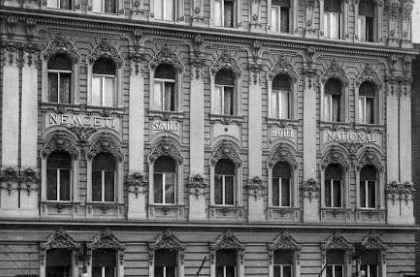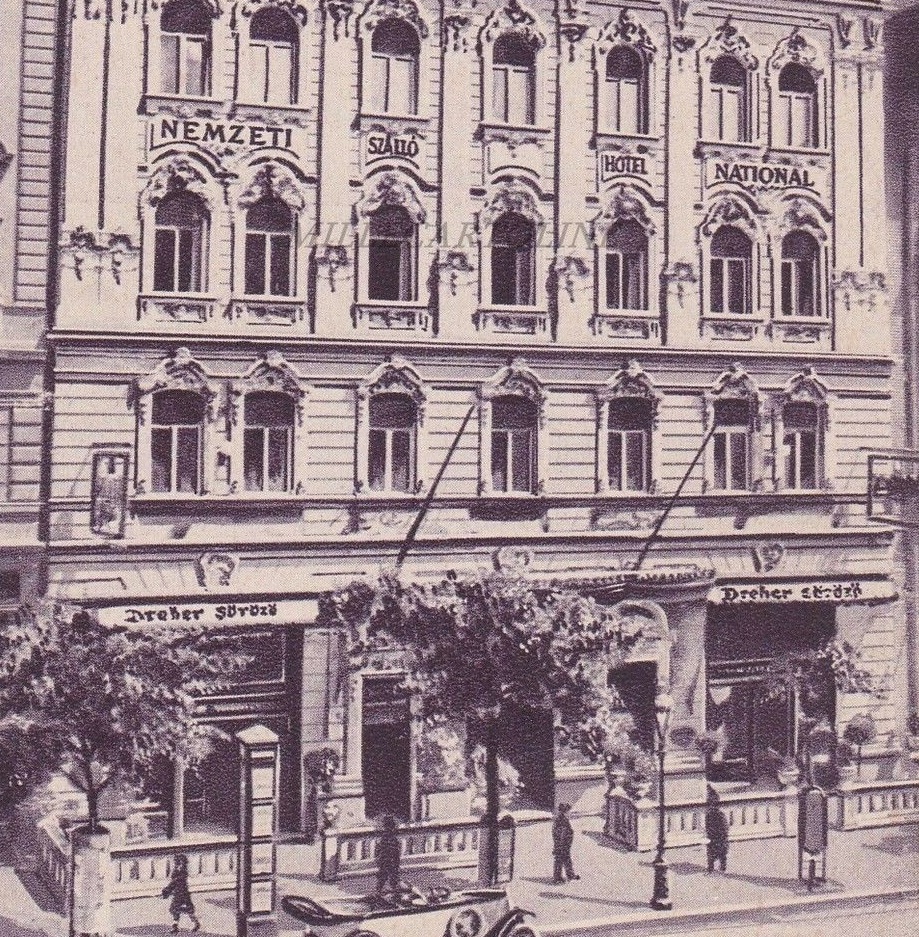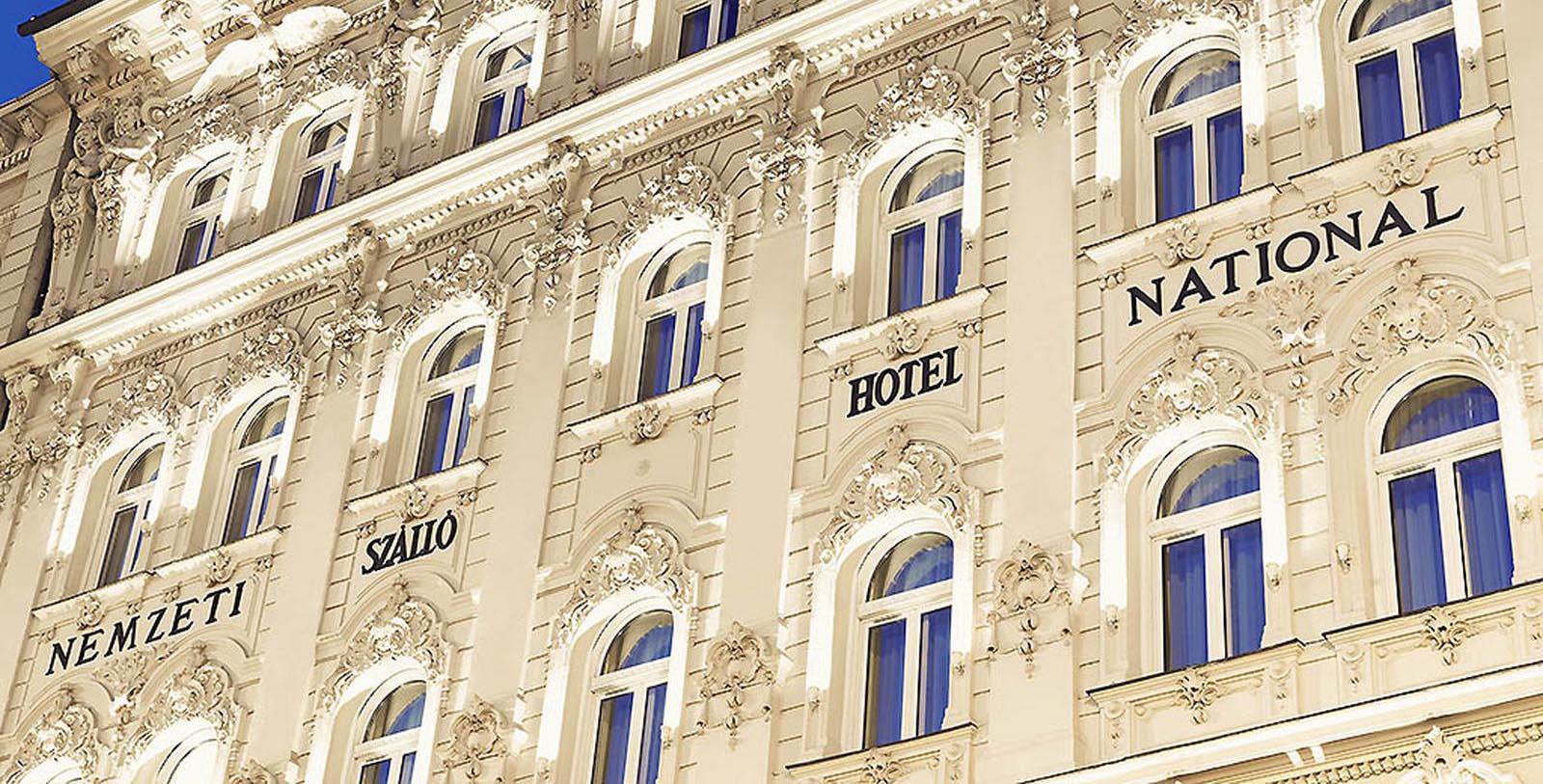Receive for Free - Discover & Explore eNewsletter monthly with advance notice of special offers, packages, and insider savings from 10% - 30% off Best Available Rates at selected hotels.
history
Discover the Hotel Nemzeti Budapest - MGallery by Sofitel, which has been a celebrated local landmark since 1896.
Hotel Nemzeti Budapest - MGallery by Sofitel, a member of Historic Hotels Worldwide since 2018, dates back to 1896.
VIEW TIMELINEHotel Nemzeti Budapest | Köves Éva Kiállítás
Gaze upon the artistic spirit of Budapest inside the brilliant Hotel Nemzeti Budapest - MGallery by Sofitel.
WATCH NOWA nascent, yet energetic community of Hungarian intellectuals had begun congregating in Budapest in the 19th century, campaigning for the creation of various public institutions that could champion the region’s vibrant culture. Ferec Kazinczy and István Széchenyi were two of these great thinkers, who specifically advocated for the development of a national theater company. Convinced by their arguments, the Hungarian Parliament decided to found such an organization in 1837. Debuting as the “Pesti Magyar Színház” (Hungarian Theater of Pest), the company specialized in hosting dramatic plays inspired by the works of renowned Hungarian authors. The Pesti Magyar Színház became the “Nemzeti Színház” (National Theatre) after the government nationalized the organization some three years later. Despite the great prestige that it wielded throughout Budapest, the theater never possessed a permanent home for longer than a few decades. Among the many locations that it occupied was the People’s Theater Building in Blaha Lujza tér (Blaha Lujza Square), which it moved into in 1908. Within a matter of months, the Nemzeti Színház rapidly cultivated a devout following of artists and scholars who found its shows irresistible. As such, the company performed numerous, dazzling performances that captivated the entire city. Many businesses near Blaha Lujza tér prospered from the presence of the Nemzeti Színház. A magnificent, five-story hotel located just a few blocks away was among those that benefited the most.
Already an established destination in Budapest since 1896, the hotel attracted a considerable clientele base due to its then-luxurious amenities like central heating and electric lighting. But with the arrival of the Nemzeti Színház, the hotel became an immensely popular gathering spot for the theater’s enthusiastic patrons. As the Nemzeti Színház grew in repute, so too did the hotel. This interest led to the formation of a tight relationship between the two that persisted for generations. When the hotel finally assumed the name “Hotel Nemzeti” in 1929, it was just as admired as the Nemzeti Színház itself! Nevertheless, the local government evenutally relocated the Nemzeti Színház to another neighborhood during the mid-1960s. Despite the absence of the Nemzeti Színház, the Hotel Nemzeti managed to maintain its exalted status. Now operated by AccorHotels as the “Hotel Nemzeti Budapest - MGallery by Sofitel,” this spectacular holiday destination continues to be an illustrious historical landmark in downtown Budapest. It still celebrates the city’s rich artistic heritage, going as far as to form its own cultural organization called the “National Arts Club.” In close collaboration with the Hotel Nemzeti, this group of intellectuals has endeavored to preserve Budapest’s unique, historical commitment to the arts. Hotel Nemzeti Budapest - MGallery by Sofitel has been a member of Historic Hotels Worldwide since 2018.
-
About the Location +
Like many other great European cities, Budapest can trace its lineage back to the time of the Roman Empire. The Romans first inhabited the region in the 2nd century AD, building a frontier settlement known as “Aquincum” upon the site of an earlier Celtic town that hugged the Danube. (The modern Budapest neighborhood of Óbuda constitutes the nucleus of the historic Roman outpost.) At first, Aquincum’s sole purpose was to act as a military bastion for the Roman province of Pannonia Inferior. Yet, a small market town grew around the Roman base, gradually transforming the community into a regional hub of trade. Wealth subsequently flowed into Aquincum, giving rise to a construction boom that saw the creation of such renowned cultural structures like amphitheaters, villas, and public bathhouses. The Romans continued to occupy Aquincum for generations, until the collapse of their transcontinental empire in the 4th century. In the power vacuum that followed, roving bands of nomadic warriors—including the Huns and the Avars--sacked the city and dominated the surrounding plans for years. Political stability briefly returned to the locale when a joint army consisting of soldiers from both the Holy Roman Empire and Bulgaria defeated the marauders once and for all in the early 9th century. The Bulgarians subsequently claimed sovereignty over the land, developing two new fortified towns on opposite sides of the river called “Buda” and “Pest.”
The arrival of Arpad and his tribe of Magyars from Bulgaria at the end of the century evenutally forced the local Bulgarians to leave Buda and Pest. Arpad and his descendants would subsequently rule over the two settlements for the next four centuries, using them both as the capital of the Principality of Hungary, and its successor, the Kingdom of Hungary. Buda and Pest remained economically vibrant throughout the Middle Ages, attracting all kinds of merchants from commerce-rich places like France, Wallonia (part of modern Belgium), and the Holy Roman Empire. Yet, the two town also held similar military functions to its Roman predecessor. The Bulgarians constantly warred with the Arpads in a series of related conflicts known as the “Bulgarian-Hungarian Wars,” while also withstanding the ferocity of the Mongols. Imposing embattlements eventually surrounded the two towns, making them some of the most heavily fortified communities in all of Europe. Buda itself started to emerge somewhat more prominently in Hungarian politics as a result, especially after King Béla IV placed his own royal palace (Buda Castle) atop the strategic high ground that sat at its center. As such, Buda had become the exclusive capital for the Kingdom of Hungary, as well as the home for successive generations of Hungarian monarchs.
The height of Buda and Pest’s prosperity within the Kingdom of Hungary occurred during the Renaissance, when King Matthias I sponsored the creation of many philosophical and scientific organizations in each community. In fact, his Bibliotheca Corviniana serves as the crowning jewel of his intellectual accomplishments. But the Kingdom of Hungary would evenutally dissipate during Suleiman the Magnificent’s invasion of southeastern Europe in the 16th century. Now under Ottoman occupation, Buda and Pest reverted to being provincial capitals inside a much larger empire. Yet, the Ottomans invested heavily into the upkeep of both towns, sponsoring the creation of many outstanding facilities. (Two of their greatest legacies are the Rudas Baths and the Király Baths, which are still in use today.) The rule of the Ottomans proved to be comparatively brief, though, only lasting for some 150 years. In 1686, each city was finally recaptured by European forces amid the Great Turkish War. As such, Buda and Pest became a part of the Holy Roman Empire, before finally joining its successor—the Austrian Empire—two centuries later.
In 1848, an uprising of Hungarians throughout the Habsburg dominion nearly seized independence for Buda and Pest, although the Austrian imperial army was able to suppress the movement. The Austrian monarchs then proceeded to reestablish the Kingdom of Hungary as a form of reconciliation, joining its revived royal crown with that of Austria’s. As such, Buda became the joint capital for the newly created Austro-Hungarian Empire alongside the city of Vienna. Pest then joined its sibling community in 1873, when the two were merged into one single entity known as “Budapest.” The local Hungarian government then initiated a massive series of renovations throughout the city, which resulted in the construction of such landmarks like Heroes' Square, Vajdahunyad Castle, and the many structures that reside along Andrássy Avenue. Budapest continued to function as the twin seat of power of the Austro-Hungarian Empire until 1918, when it became the capital for an independent Hungary after World War I. Budapest has remained the center of government for Hungary ever since, even while it was occupied by the Nazis and Communists during the 20th century. Today, much of downtown Budapest is recognized for its grand historical significance, with much of its downtown core listed as a UNESCO World Heritage Site.
-
About the Architecture +
Constructed toward the end of the 19th century, the Hotel Nemzeti Budapest - MGallery by Sofitel displays some of the finest Art Nouveau-style architecture in all of Budapest. Part of the greater cultural phenomenon known as the “Belle Époque,” Art Nouveau architecture was among the most popular styles in Europe from the 1890s till the outbreak of World War I. It quickly appeared all across the continent, referred to by such names like “Glasgow Style,” “Modern Style,” and “Sezessionsstil.” And some of Europe’s most prominent architectural minds employed Art Nouveau architecture. Perhaps the greatest example Hector Guimard’s wonderful Castel Béranger. The term itself was derived from an article published in the L’Art Moderne to introduce the work of architectural collective Les Vingt toward the end of the 19th century. Architects who embraced the Art Nouveau were among a growing demographic of intellectuals that yearned to create novel artistic forms that broke with the imitative historicism of the past. More importantly, they wanted their new architectural motifs to reflect imaginative creativity, especially as European society became increasingly more structured and industrialized. Over time, those professionals created a design aesthetic characterized by its curvaceous lines and use of organic shapes. Objects from nature were featured prominently throughout the façade of every structure, too, including the likes of insects and exotic plants. Surfaces often contained terra cotta coverings, and ornate tile moldings spread throughout the interior. Sloped arches also defined the windows and doors, while fantastic mosaics existed on nearly every ceiling. Asymmetrical layouts structured many Art Nouveau buildings, as well, providing for a unique appearance in many of Europe’s sprawling cities. Art Nouveau architecture was eventually phased out during the 1920s in favor of a new style known as “Art Deco.” Its emphasis on modernity seemed to better represent Western culture as it emerged from the aftermath of World War I.




























